Reviews
Sam Fuller
USA, 1959
Credits
Review by Leo Goldsmith
Posted on 27 November 2012
Source Warner Archive DVD-R
Categories Samuel Fuller: Deep Cuts
I saw Göring… I saw film… I didn’t know!
Most filmographies name Sam Fuller’s 1949 film I Shot Jesse James as the director’s first film, but Fuller himself cites another. On May 6, 1945, Fuller was serving in the army unit that liberated the Nazi concentration camp at Falkenau in the Sudeten region of Czechoslovakia. Here, he witnessed the aftermath of Nazi atrocity firsthand and, at the suggestion of his commander, filmed the devastation of the camp on a Bell & Howell camera sent to him by his mother.1 This was Fuller’s first movie, and while few saw this material until more than a decade later, when he incorporated it into his 1959 World War Two drama Verboten!, its images left an impression on the filmmaker that would prove difficult to shake. He revisited this material as late as his autobiographical 1980 film The Big Red One, whose climax explicitly dramatizes these events, and in Emil Weiss’s 1988 documentary Falkenau: Vision of the Impossible, which makes use of the original footage and even follows Fuller as he returns to the camp some decades later. Still, Verboten! remains in many ways the most powerful - and the most curious - of Fuller’s returns to this material, not least for its curious blend of home movies and Hollywood genre filmmaking.
The film’s plot is of a piece with those of other Fuller war films, and it opens with characteristic bravado. It’s the tail end of the war, and a small American troop is rooting out German snipers amid the late-war devastation of a town called Rothbach. (Here and throughout, there are echoes of battered and blasted terrain of Vienna in The Third Man.) Fuller accompanies this scene with no less a score than Beethoven’s Ninth—as he put it in his memoir, the scene features “no dialogue, just noble, grandiose music and ballsy, man-to-man combat.” But the odd pairing is just the first in a film that is about irresoluble conflict. Soon, one of the American troops, David Brent, is wounded and is taken in by local girl Helga Schiller for safety. Risking her own life, Helga nurses Brent back to health, and soon the American falls in love with her, flouting the rules against verboten fraternizing between American soldiers and German locals, and giving up his chance of a ticket back to the States in order to marry and protect her.
Of course, this being a Sam Fuller film, this gallant instinct isn’t necessarily found to be a great idea. For one, Brent’s sacrifices for Helga lead him to a position in the transitional American Military Government—amid a tense occupation fraught with food-shortages, lingering resentment, and even resurgent Nazi activity under the aegis of the Werwolf, a younger generation of insurgents and survivors eager to carry on the Nazi cause. On top of this, even Helga’s motivations are unclear: is she as devoted as Brent is to her? Or is the GI just a meal ticket who can provide her with pantyhose and Hershey bars in exchange for a few “favors”? (Once Brent himself starts to suspect, this prompts the memorable line: “You just give birth to my kid and I don’t give a damn what happens to you!”) It doesn’t help that Helga counts among her closest confidants her teenage brother Franz, embittered against the Americans since the loss of his arm, and Bruno, ringleader of the Werwolf and, incidentally, a spy working within the military government, right under Brent’s nose.
Fuller’s take on this milieu is deeply cynical, but like many of his films, Verboten! is also committed to exposing the truth in the face of rampant hypocrisies and Hollywood bullshit. For one, the film is eager to maintain, as Helga puts it, that “There is a difference between a Nazi and a German,” and that the struggle for de-Nazification is as much a German problem as an American one. In this regard, Fuller emphasizes the clash between the good German and the bad as something like an internal struggle—a clash between Beethoven and Wagner, whose “Ride of the Valkyries” Fuller uses to score the Werwolf’s devious terrorist activities. (There’s also the limp Paul Anka theme song over the credits, but that’s another matter entirely. In any case, Fuller used it reluctantly and never returns to it in the film.)
Just as Helga’s affiliations are portrayed as ambiguous, so too are those of the remnants of Nazi sympathies. Even the arch-villain Bruno (played by Tom Pittman, who died in a car crash shortly after shooting the film) has moments of humanism between acts of ghoulish fascist bloodlust, and Fuller himself suggested that his character is as much a product of the 1950s fascination with the issue of juvenile delinquency than it is with Germany’s actual post-war history. In this way, Verboten!, coming in the wake of the United States Senate Subcommittee on Juvenile Delinquency (which sought out indecency in comic books, magazines, rock ‘n’ roll, and motion pictures just a few year earlier), shares more themes with Rebel Without a Cause than one might expect for what is putatively a war film.
Thus Fuller once again proves himself the passionate editorialist as well as the maverick filmmaker. As Serge Daney (quoted by Jonathan Rosenbaum) once said of Fuller, “one always finds both a war correspondent and a mad educator…. He takes off from an implicit idea: the spectator knows nothing—or practically nothing.” Of course, Fuller’s work rarely sinks to the level of petty didacticism, but throughout Verboten! there is nonetheless the ardent newspapersman’s desire to get at and expose the truth for all to see. Nowhere is this more evident than in the legendary scene in which Fuller recreates the Nuremberg trials, to which the now-contrite Helga takes young Franz to teach him a little Nazi history. Of course, we’re treated to a history lesson ourselves—complete with Fuller’s own chilling imagery of Falkenau, along with other footage taken by Ray Kellogg, Fuller’s special effects man. (George Stevens also filmed in both 35mm and color 16mm at Dachau at the close of the war. The footage shot by Fuller, Stevens, Ford, and Kellogg was commemorated in a traveling exhibition at the Mémorial de la Shoah and the Museum of Jewish Heritage in the last year.) Kellogg had also worked as an assistant to John Ford during the war and attended the Nuremberg trials at the behest of Supreme Court Justice Robert Jackson, the trial’s chief prosecutor, who commissioned Ford’s team to direct a film of the Nazi concentration camps to be shown as evidence. It’s this film that Fuller’s scene recreates, even though the status of Ford’s film as “evidence” is decidedly ambiguous: it incorporated documentary footage as well as some reenactments, was admissible only on a technicality peculiar to this tribunal, and was quite clearly deployed by Jackson for shock effect. But in Fuller’s film, the footage - which is paired with the director’s own cool, gut-wrenching voiceover - serves a clear function: this is the real thing, the nadir of human depravity, and don’t you forget it.
This is not to say that audiences were unaware of the horrific facts of the Holocaust. In fact, by 1959, representations of the Holocaust onscreen were relatively familiar—George Stevens’s Oscar-winning adaptation of The Diary of Anne Frank was released that same year, and as early as Orson Welles’s 1946 film The Stranger, images of the concentration camps had been integrated into narrative films as a historical index of Nazi atrocities. Fuller’s film, however, makes use of these documentaries and home-movies in an aggressive and pointed way that goes to the very heart of his film—indeed, to the heart of his project as an artist. Throughout, Fuller intercuts his studio-shot footage with other images taken from diverse sources (his own films, as well as newsreels and military films) in an assault of conflicting textures and modes—actuality penetrates the film’s diegesis, interrupting it with vivid shots of war’s brutal realities. In his own review of the film, Truffaut compares Fuller’s work to that of an action painter, even using the term “direct cinema” to characterize his highly reactive (or to borrow a phrase from Park Row, “off the cuff”) style of shooting. And in a sense, there is something as something intuitive, even spastic, about the film’s editing too, as in the one scene in which he furtively, but expertly cross-cuts between Werwolf’s activities, food riots, and Brent’s attempts to quell the insurgency. All of these insistent clashes of tone and cinematic styles lends to an overall mood of antagonism and chaos that fits the film’s broken milieu and, in scholar Lisa Dombrowski’s opinion, primes the audience for the gut-punch awaiting them in the Nuremberg scene, in which young Franz’s sweaty and horrified face, shot in closeup, is intercut relentlessly with Fuller’s old footage of emaciated bodies, piles of extracted teeth, and corpses cast into ditches. This is Fuller’s aim—to force Hollywood melodrama into a direct confrontation with the real.
- Marsha Orgeron has carefully analyzed this original film in an excellent and insightful essay called “Liberating Images? Samuel Fuller’s Film of Falkenau Concentration Camp,” published in the Winter 2006 issue of Film Quarterly.↩
More Samuel Fuller: Deep Cuts
-
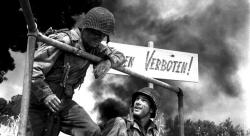
Verboten!
1959 -
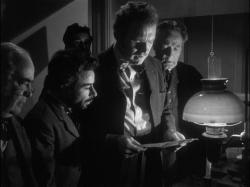
Park Row
1952 -
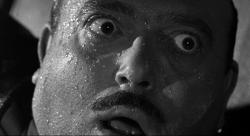
Underworld U.S.A.
1961 -
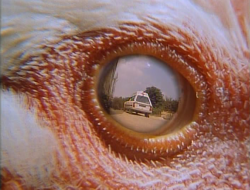
The Day of Reckoning
1990 -
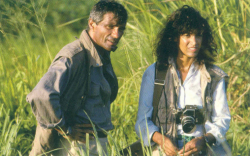
The Madonna and the Dragon
1990
We don’t do comments anymore, but you may contact us here or find us on Twitter or Facebook.



